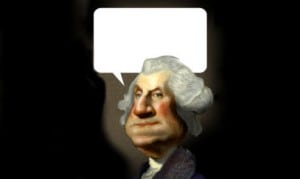
As we've learned from Abercrombie & Fitch's CEO Mike Jeffreys, once a damning statement is out there, it can be very difficult to contain (even seven years after the fact). Quotes from executives in any public forum, whether a Salon magazine interview or internal press release, need to be handled with care.
At the May 14 PR News Writing Boot Camp in Washington, D.C. Pamela Baker-Masson gave attendees some crucial pointers how to put quotes to good use in press releases. Here's what Baker-Masson, the associate director of communications at Smithsonian National Zoo, had to say when faced with one of life's eternal debates: "To quote? Or not to quote? That is the question."
- Make your quotes conversational: Skip the jargon. "Read your quote out loud," she advised. "Does it really sound like the person you’re quoting? Does it even sound like a real person?"
- Freshen up: A quote needs to say something new, something that your press release doesn't. "Don't rewrite your lead sentence as a quote," Baker-Masson warned.
- Use product placement sparingly: "If you identify your person, company or product in the quote – it better not “feel” like Vanna White," she said.
- Be excited, but with a reason: Avoid saying things like someone is ‘happy’ or ‘pleased.’ Baker-Masson clarified: "As one journalist told me, “Isn’t that why you’re putting out the news release?”
"Sometimes the quote in the news release is all the reporter has, so you need to make it count," said Baker-Masson.
Follow Lucia Davis: @LKCDavis.

Depending on the situation, I like to introduce a new angle or aspect to the story in the quote. That gives the reporter an extra reason to want to follow up on the story and actually talk to someone.
Good call, Tracey! Thanks for reading.